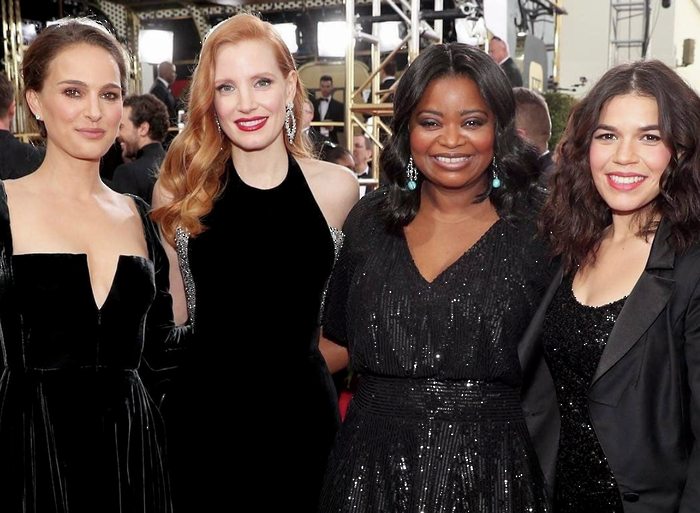Fashion photography icons accused of sexual misconduct
In the wake of yet more accusations of sexual harassment in the workplace, Jen Nurick considers the industry’s issue with fashion photography legends, Mario Testino and Bruce Weber
In the dawn of 2018, red carpets are awash with black, while viral campaigns against the silencing of sexual harassment flood social media, promising a change in tide. Yet the revelations of serious sexual misconduct by industry heavyweights, photographers Bruce Weber and Mario Testino, this week are proof enough that the storm rages on unabated, illuminating fashion’s sinister underbelly anew.
The New York Times exposé details incidents of Weber’s and Testino’s sexual harassment as corroborated by over fifteen male models and assistants who worked with the photographers. The article, which aptly coincides with Men’s Fashion Week and dates back to instances of sexual harassment from the ’90s, airs comprehensive accounts of Weber and Testino performing ‘breathing’ exercises, fondling and kissing models on and off set. Of working with Testino, model Robyn Sinclair recalled to The New York Times, “A lot of touching. A lot of molestation”; while actor Ryan Locke asserts, “He was a sexual predator. Everyone started making these jokes… ‘Tighten your belt.’” The stories surrounding Weber unfold similarly: model Rudi Dollmayer claims, “They even [had] a term for it: he’s going to get Brucified.”
This materialised behind closed doors, on first-class flights and in hotel rooms at the Chateau Marmont, often leading to high-paying editorial campaigns and promise of future magazine spreads. As model Taber summates, “I would almost get offended if they didn’t want to [sleep with me]. That’s how I got groomed.” Herein lies the problem.
“Like Terry Richardson, Weber and Testino’s industry status once made them untouchable and unpunishable”
That women across film and fashion are reclaiming the microphone to speak up against sexual harassment – as they should – is today (thankfully) impossible to ignore. The solidarity displayed at the recent Golden Globes in accordance with the Time’s Up initiative is testament to that. However, the impetus for men to do the same – while simultaneously acknowledging that much of the blame is laid on men themselves – has neither been perceived as urgent or as necessary in public debate. Until now.
Bruce Weber has shot countless fashion campaigns for the industry’s biggest designers, cementing his influence and power
Artistic director of Condé Nast, Editor-in-chief of American Vogue and personal friend of Weber and Testino, Anna Wintour is rolling out a new Code of Conduct and putting “working relationships with both photographers on hold for the foreseeable future”. British Vogue immediately followed suit, and Hearst (the media conglomerate under which titles like Harper’s Bazaar and Elle belong) has added a clause to its contributor agreements as well. Legislative bills across New York and California will also be introduced this month to address protections against sexual harassment in the industry. But what of Wintour’s complicity in the past (and the legions of editors and designers that followed in her footsteps)?
Alongside his infamous Towel Series, campaigns for Burberry, Stuart Weitzman and spreads for Vanity Fair and W Magazine, Testino is perhaps the most frequent regular contributor to American Vogue, having shot every celebrity under the sun – Taylor Swift, Jennifer Lawrence, Angelina Jolie – for the cover, even as recently as February’s issue fronted by Serena Williams. While I interned at Vogue Australia, he guest-edited an issue, and everyone ran circles around him. He even lensed Prince William and Kate’s engagement photos, and was awarded an OBE in 2014.
Mario Testino is renowned for his infamous Towel Series, here featuring fashion designer Carolina Herrera
With spreads in V Magazine and CR Fashion Book and campaigns for Abercrombie & Fitch, Versace and Calvin Klein, Weber exercises the same power, shooting everyone from Kim Kardashian, Madonna, Johnny Depp and Leonardo DiCaprio. Former agent at Next Management, Gene Kogan summarises the industry’s propensity for silence: “It was general practice to give a model a heads-up about a photographer… [with] a certain reputation… [But] if you said you were not going to work with someone like Bruce Weber or Mario Testino, you might as well just pack it in and go work in another industry.” Like Terry Richardson, Weber’s and Testino’s industry status once made them untouchable and unpunishable. Now, it individuates their behaviours, emphasizing the ends of individual careers instead of highlighting the existence of issues that plague workplaces at large.
In the meantime, fashion fans mourn the loss of images we once held in high esteem, that today threaten to unveil new meanings. That Weber and Lavely & Singer, the law firm representing Testino, have denied these allegations does little to buoy up the courage of men or women to speak up. Perhaps Condé Nast’s severed ties with both photographers will. Or better yet, in the wake of a near future, maybe they won’t have to
 News / Downing investigates ‘mysterious’ underground burial vault 29 December 2025
News / Downing investigates ‘mysterious’ underground burial vault 29 December 2025 News / Unions protest handling of redundancies at Epidemiology Unit30 December 2025
News / Unions protest handling of redundancies at Epidemiology Unit30 December 2025 Lifestyle / Ask Auntie Alice29 December 2025
Lifestyle / Ask Auntie Alice29 December 2025 Features / ‘Treated like we’re incompetent’: ents officers on college micromanagement30 December 2025
Features / ‘Treated like we’re incompetent’: ents officers on college micromanagement30 December 2025 Science / Astronomical events to look out for over the break29 December 2025
Science / Astronomical events to look out for over the break29 December 2025










